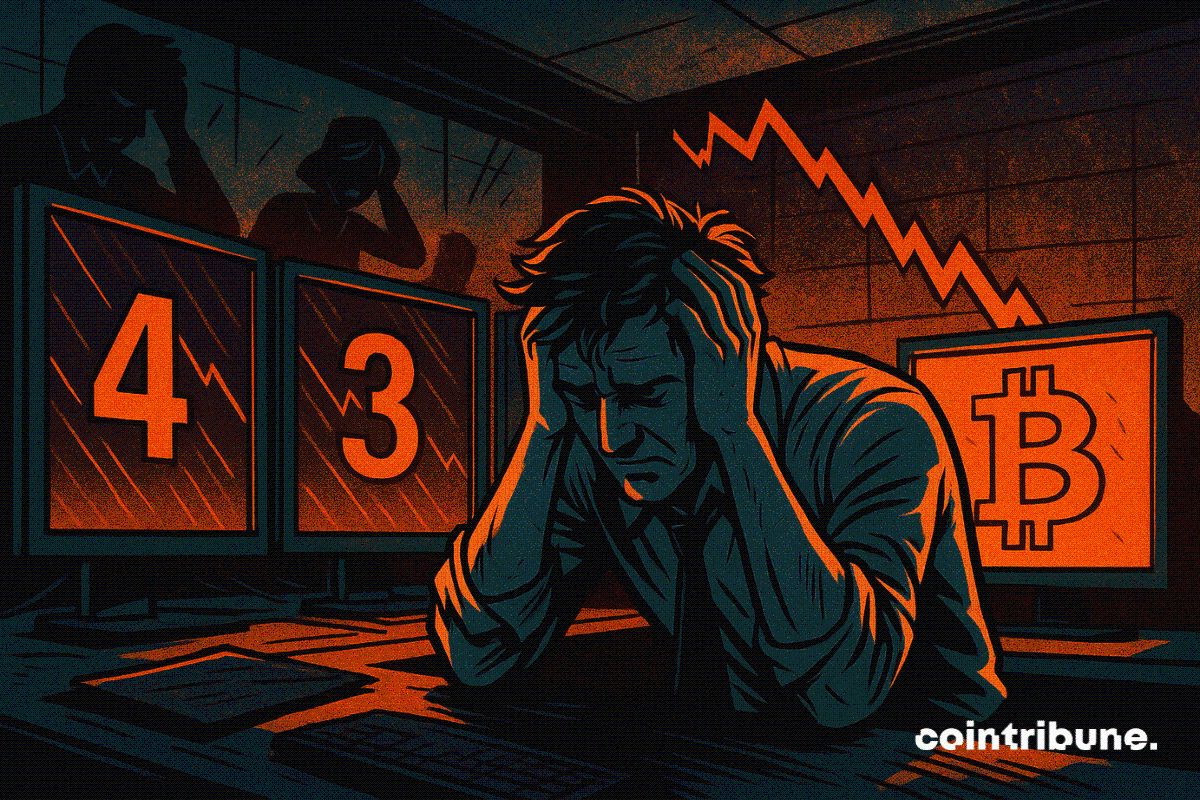Trade War + AI Bubble: When Two Major "Powder Kegs" Converge, Is the Endgame of the Supercycle Already Decided?
The global economy faces risks from feedback loops among policy, leverage, and confidence. Technology supports growth, but fiscal populism is on the rise and trust in currency is gradually eroding. Trade protectionism and speculative AI-driven finance are intensifying market volatility. Summary generated by Mars AI. The accuracy and completeness of this summary are still being iteratively improved.
2025 = The Year of the “Mid-Cycle”
The market is caught in a paradox.
Beneath the calm surface of “soft landing” optimism, the global economy is quietly fracturing along the lines of trade policy, credit expansion, and technological overreach.
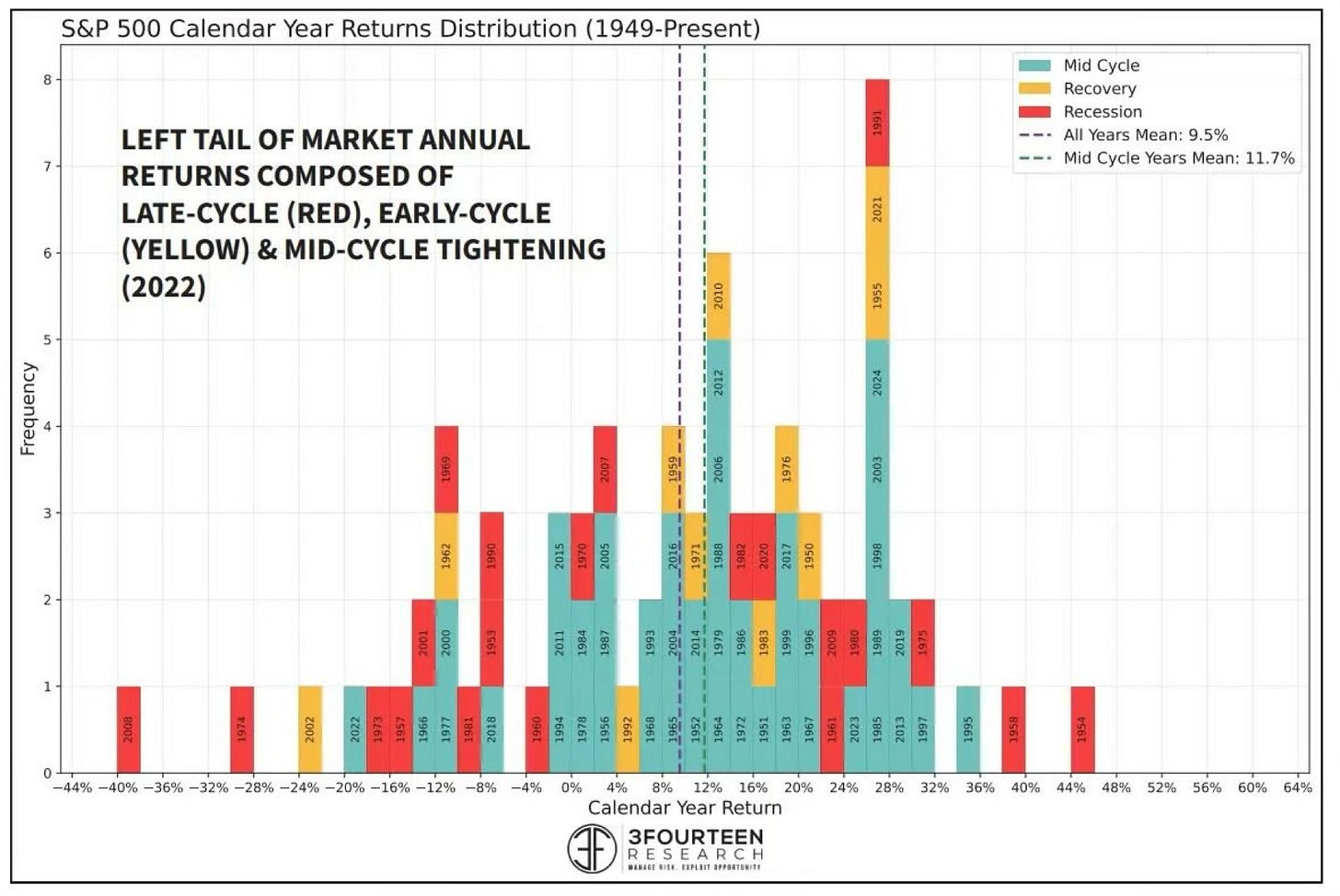
Core Argument:
The next global economic dislocation will not stem from a single failure, nor from tariffs or AI debt, but from a feedback loop between policy, leverage, and belief.
We are witnessing the late stage of a supercycle: technology underpins growth, fiscal populism has replaced trade liberalism, and monetary trust is slowly eroding.
The boom is not over, but it has begun to fragment.
This week’s volatility is a microcosm of this story.
As US-China tariff fears reignited, the VIX index saw its largest surge since April, only to pull back later in the week when President Trump confirmed that the proposed 100% import tariff would be “unsustainable.” The stock market breathed a sigh of relief; the S&P 500 stabilized. But this relief is superficial—the deeper narrative is that policy tools are exhausted, and optimism is overdrawn.
1. The Illusion of Stability
The US-EU trade agreement in July was intended to provide an anchor for a fragile system.
However, it is now unraveling due to climate regulation disputes and American protectionism. Washington’s demand for US companies to be exempt from ESG (Environmental, Social, and Governance) and carbon disclosure rules highlights a widening ideological rift: Europe’s “decarbonization” versus America’s “deregulation.”
Meanwhile, China’s new restrictions on rare earth exports, including a ban on the use of any magnets containing trace amounts of Chinese metals, have exposed the strategic vulnerability of global supply chains. The US response—threatening a 100% tariff on Chinese imports—is a political gesture with global consequences. Although later retracted, it reminded markets that trade has become “weaponized finance”, serving as leverage for domestic sentiment rather than economic rationality.
The World Trade Organization (WTO) has warned that global goods trade will slow sharply by 2026, reflecting a reality: corporate investment in supply chains is now driven by contingency, not confidence.
2. The AI Supercycle
Meanwhile, a second narrative is unfolding in the AI economy—more subtle, but potentially more profound.
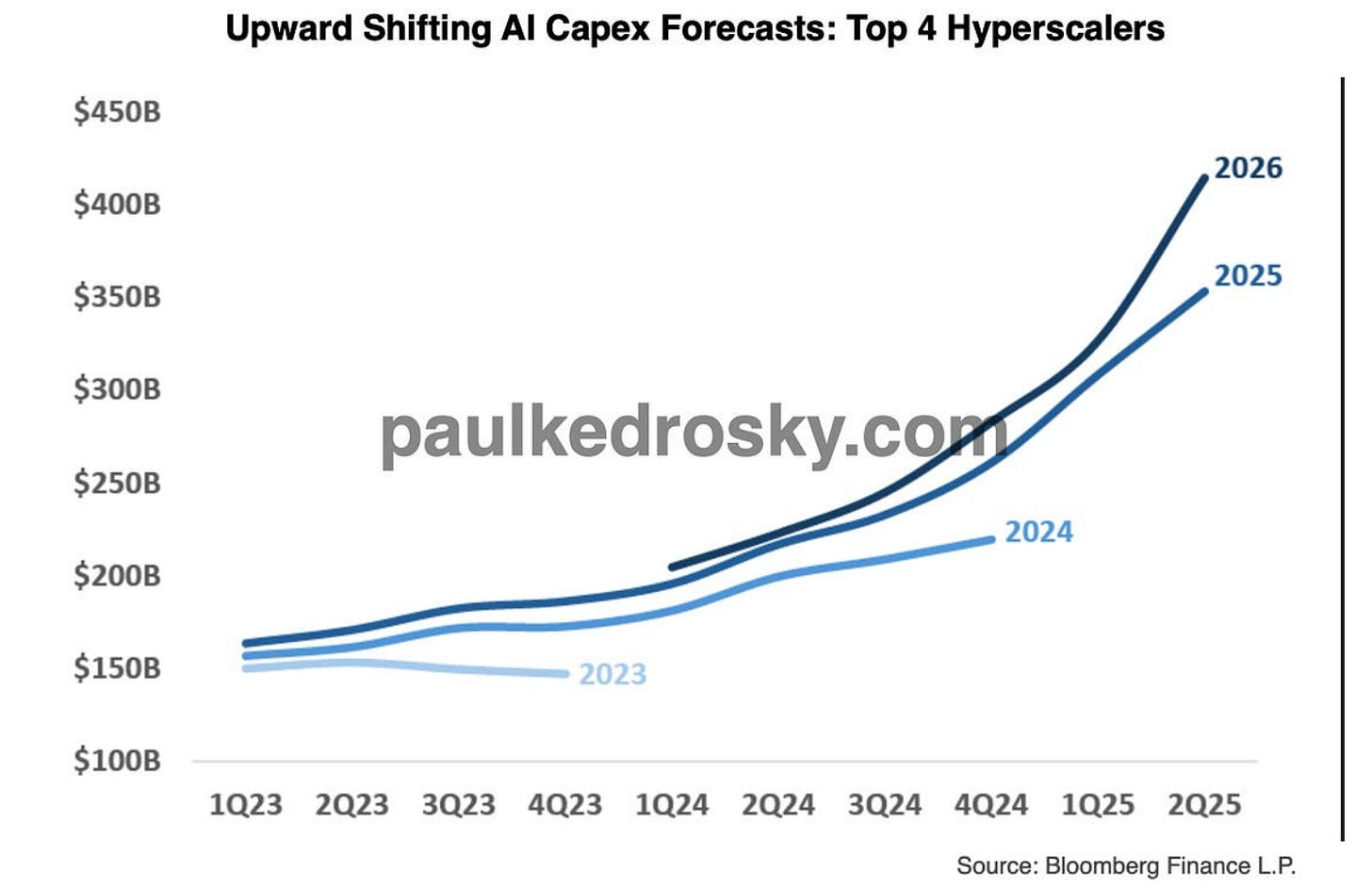
We are moving from “productive expansion” to “speculative finance,” characterized by a surge in vendor financing and declining coverage ratios. Hyperscalers are leveraging their balance sheets at a pace faster than revenue growth—a classic sign of late-cycle irrational exuberance.
This is nothing new. Of the 21 major investment booms since 1790, 18 ended in bankruptcy, usually when the quality of capital deteriorated. Today’s AI capex frenzy is reminiscent of the late 1990s telecom bubble: real infrastructure gains are entangled with credit-fueled speculation. SPVs (Special Purpose Vehicles), vendor financing, and structured debt—the same tools that once fueled the mortgage-backed securities (MBS) bubble—are making a comeback, this time under the guise of “compute capacity” and “GPU liquidity.”
The irony? The AI boom does have productivity, just unevenly distributed. Microsoft is financing its expansion through traditional bonds, signaling confidence. CoreWeave is using SPV financing, signaling stress. Both are expanding, but one is building durable capability; the other is accumulating fragility.
3. Volatility as a Symptom
The VIX surge reflects deeper market unease: policy uncertainty, concentrated market leadership (i.e., a handful of large tech stocks), and credit stress beneath the surface of boom valuations.
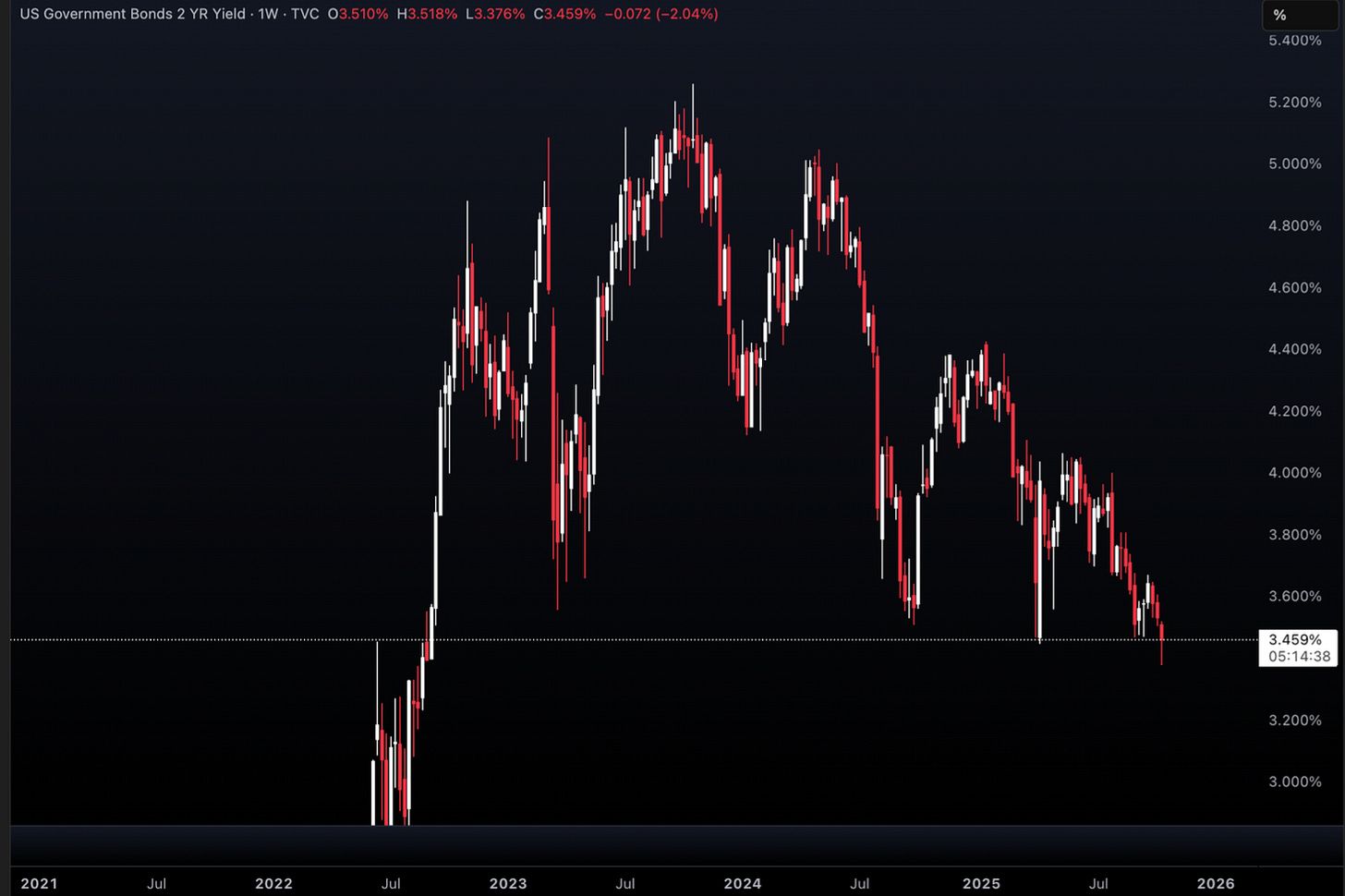
When the Federal Reserve now hints at rate cuts amid slowing growth, it is not stimulus—it is risk management. The two-year US Treasury yield has fallen to its lowest level since 2022, telling us that investors are pricing in a “deflation of confidence,” not just interest rates. The market may still cheer every dovish pivot, but each rate cut further erodes the illusion that “growth is self-sustaining.”
4. Trade, Technology, and Trust
The thread connecting tariff politics and AI irrational exuberance is trust—or more accurately, its erosion.
- Governments no longer trust their trading partners.
- Investors no longer trust policy coherence.
- Corporations no longer trust demand signals, so they overbuild.
The surge in gold above $4,000 is less about inflation and more about this erosion of belief—belief in fiat systems, in globalization, in institutional coordination. This (i.e., buying gold) is not hedging prices, but hedging “policy entropy”.
5. The Road Ahead
We are entering a period of “fragmented prosperity”—a time when nominal growth and market highs coexist with structural fragility:
- AI investment is driving GDP like railroads in the 19th century.
- Trade protectionism is boosting local production while draining global liquidity.
- Financial volatility swings between “euphoria” and “policy panic.”
At this stage, risk is accumulating.
Each tariff rollback, each capex announcement, each rate cut, extends this cycle—but also compresses the space for its eventual unwind. The question is not whether the AI or trade bubbles will burst, but how intertwined they have become when they do.
Disclaimer: The content of this article solely reflects the author's opinion and does not represent the platform in any capacity. This article is not intended to serve as a reference for making investment decisions.
You may also like
The most crucial year! The market is deeply manipulated, and this is the real way whales make money.

Social Sentiment Turns Bearish For XRP
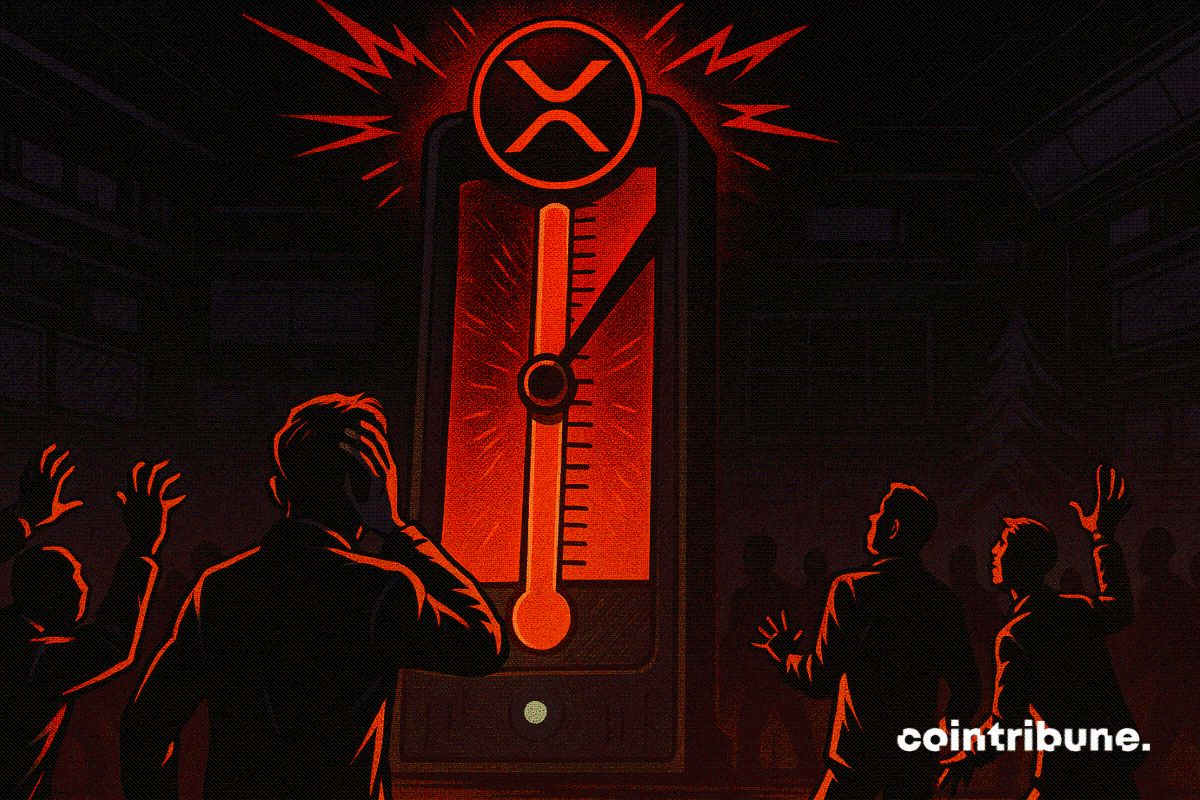
ETF, derivatives, capitulation... Bitcoin falls back into a well-known spiral
